Reforestation is the deliberate act or natural process of regenerating trees in areas that have experienced deforestation or degradation. This eco-friendly practice aims to restore our diminished forests, doing more than just bringing back the tree population. It also works to enrich ecosystems, enhance biodiversity, and recover our environment’s equilibrium. Forests, fondly referred to as the Earth’s lungs, function by inhaling carbon dioxide and exhaling the oxygen we need to survive. Furthermore, they serve as indispensable habitats for myriad species and are key players in nurturing our planet’s overall biodiversity.
But forests aren’t only ecologically significant – they’re also deeply embedded in various cultural, socio-economic aspects of human life. From providing timber and other forest products to possessing spiritual resonance in many cultures, the imprints of forests on human existence is immeasurable.
With the escalating concern about climate change and its harmful effects, reforestation has taken center stage. By amplifying the tree population, we directly contradict the impacts of greenhouse gas emissions. Trees function as carbon sinks, absorbing and storing carbon from the atmosphere. This contributes not only to lessening climate change, but it also offers other benefits such as shrinking risks from natural hazards and boosting resilience amidst fluctuating climatic conditions.
Trees exhale for us so that we can inhale them to stay alive. Can we ever forget that? Let us love trees with every breath we take until we perish.
Munia Khan
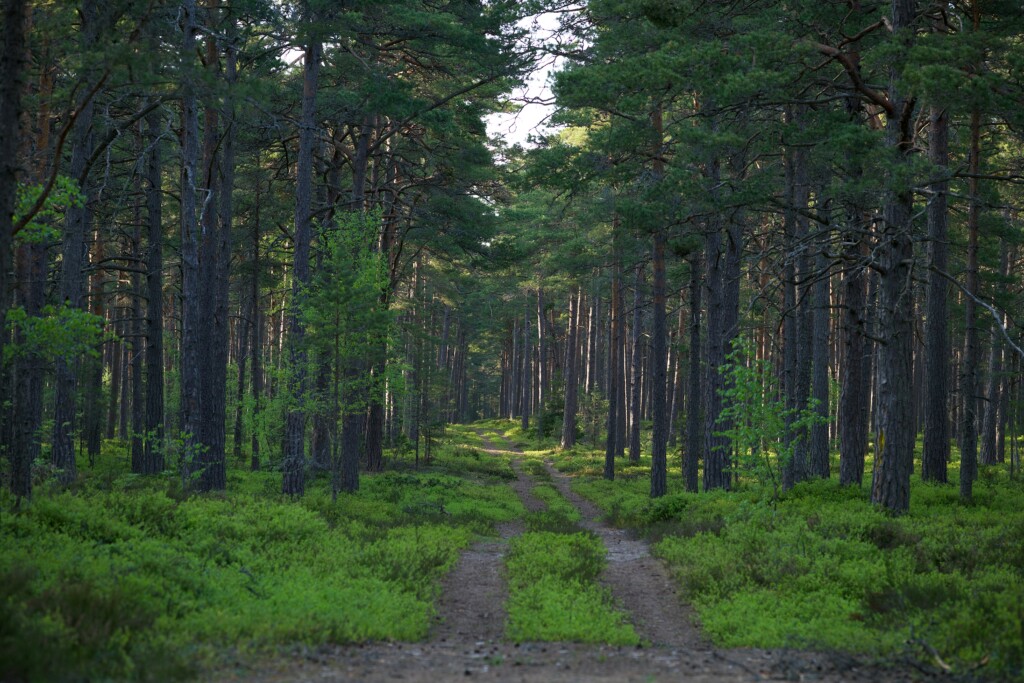
The U.S., historically rich in forests, is facing a concerning trend. Cities are losing around 36 million trees annually, and from 2001 to 2020, there was a 42.2 million-hectare decrease in forestland, marking a 15% decline. Factors like urbanization, farming, and logging are responsible for this significant loss, which has repercussions like disrupted wildlife habitats, altered water cycles, and increased soil erosion.
As a major global carbon emitter, the U.S. has a responsibility to mitigate its environmental impact. Reforestation is a direct solution. By initiating reforestation projects tailored to diverse ecosystems, from the Pacific Northwest rainforests to the Northeast deciduous forests, the U.S. can work towards a more sustainable future.
In response to this challenge, several nonprofit organizations are leading the way. Let’s explore some of the exceptional reforestation organizations that are taking considerable strides in environmental restoration across the United States.
Driven by the profound mission of simplifying environmental action, One Tree Planted has embarked on a journey to champion global reforestation. Their ambition transcends just planting trees; it’s about creating lasting ecological and social ripples that nurture the planet.
One Tree Planted believes that the environment’s restoration has multifaceted benefits. Apart from rejuvenating forests, it builds habitats that boost biodiversity, ensuring that ecosystems thrive and regain their natural equilibrium. Founded in 2014, the organization has since showcased remarkable growth and dedication, successfully planting over 40 million trees across an expansive 43 countries.
A glance at their efforts reveals a concentrated push towards areas critically impacted by deforestation or natural disasters. In North America, they have undertaken significant initiatives to revitalize forests devastated by the California wildfires. Beyond that, their projects span diverse terrains of Latin America, Africa, Asia, and Europe, each tailored to address unique ecological needs and challenges. Presently, their endeavors extend to British Colombia, where they aim to expedite forest recovery following extensive fires.
While contributions fuel their mission, One Tree Planted encourages an engaged global community. They inspire supporters to not only donate but also become ambassadors, sharing their eco-journey and emphasizing the power of collective action towards a greener future.
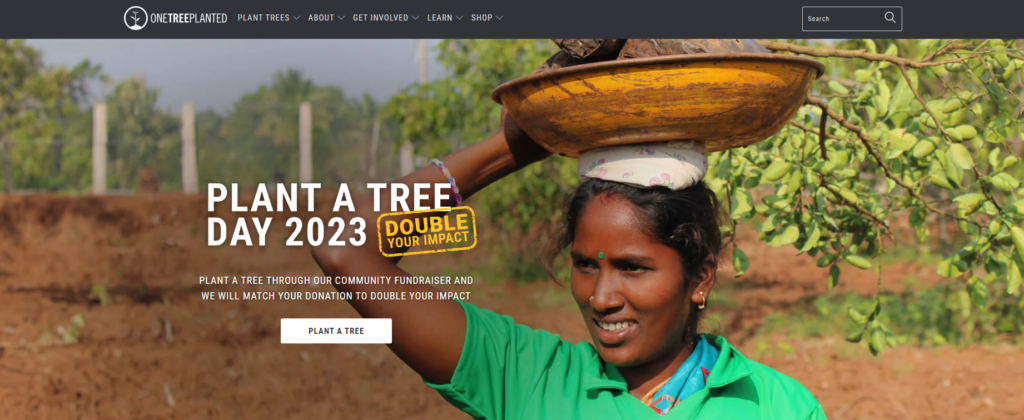
With a vision deeply rooted in community and environmental well-being, TreePeople stands as a beacon for urban ecological transformation. Their mission is clear: motivate individuals to take active and personal roles in shaping urban environments that are not only sustainable and safe but also enjoyable and vibrant. By emphasizing personal responsibility, TreePeople seeks to craft a world where each individual recognizes their potential to make a tangible difference.
Since its inception in 1973, when a young Andy Lipkis laid its foundations, TreePeople has grown to become a pivotal environmental force in Southern California. Over the decades, their initiatives have resonated with millions, transforming landscapes and mindsets alike. These efforts encompass a vast range of activities, from rejuvenating areas ravaged by forest fires to introducing fruit trees in regions marred by economic challenges. Innovative solutions, like capturing rainwater during parched periods, further showcase their dedication to harmonizing urban life with nature.
At its core, TreePeople is about community empowerment. They zealously promote the concept of community foresters – individuals who champion the cause of greening urban spaces. Volunteers, under their guidance, are nurtured to lead initiatives, planting trees everywhere from bustling business districts to tranquil neighborhood parks and vacant plots. Through these efforts, Tree People aims to instill a sense of purpose and pride in individuals, underscoring the belief that together, communities can pave the path to a healthier urban future.
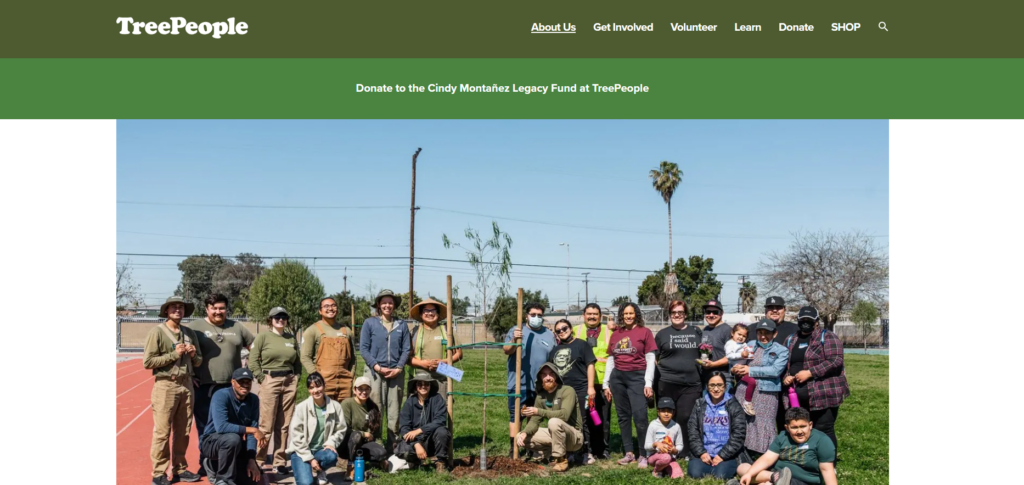
At the heart of the US’s push for greener communities is the charity Neighborhood Forest. Their primary aim? To significantly reduce the country’s carbon footprint while fostering a love for nature in young hearts.
Neighborhood Forest’s approach is both innovative and grounded. With their “Plant a Tree” program, the organization goes beyond mere tree-planting. They believe in establishing a bond between children and nature. By offering free trees to kids, the charity ensures that youngsters not only learn the basics of planting but also get hands-on experience in nurturing their saplings. This direct involvement allows children to witness the magic of growth right in their gardens, creating a lasting connection with nature.
The impact of their efforts is remarkable. To date, over 250,000 children have had the opportunity to plant trees, thanks to Neighborhood Forest. Additionally, their reach extends to educational sectors, with the program being implemented in over 900 schools across the US. Through these endeavors, Neighborhood Forest isn’t just greening spaces; they’re shaping future environmental stewards.
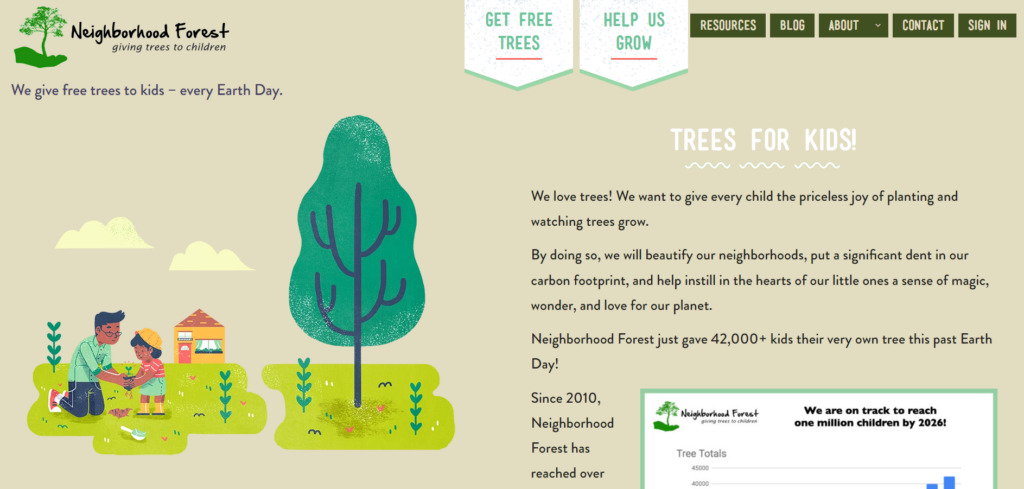
The National Forest Foundation (NFF) stands as a significant player in the conservation efforts of the United States, having been officially chartered by the U.S. Congress and subsequently overseen by the US Forest Service. The primary focus of the NFF is to safeguard an expansive 193 million acres of wildlands. These pristine forests not only serve as a haven for biodiversity and ecological balance but also contribute significantly to the national economy, bringing in an impressive $13.5 billion annually from visitors.
The impact of these forests extends beyond mere monetary value. Their role in environmental conservation, recreation, and cultural significance makes them invaluable assets to the nation.
For those looking to support the NFF’s mission, the organization has delineated its efforts into regional funds that cater to specific geographic needs and challenges. These include areas such as California, the Eastern region, the Northern Rockies, Pacific Northwest and Alaska, Rocky Mountain, and the Southwest.
NFF’s commitment to transparency is evident, as it diligently ensures that 85% of every contribution directly fuels its conservation endeavors. Besides one-time donations, supporters can opt for recurring contributions, donor-advised funds, or planned giving. A standout initiative by the NFF is its ambitious aim to plant 50 million trees, an endeavor where every supporter can make a tangible difference.
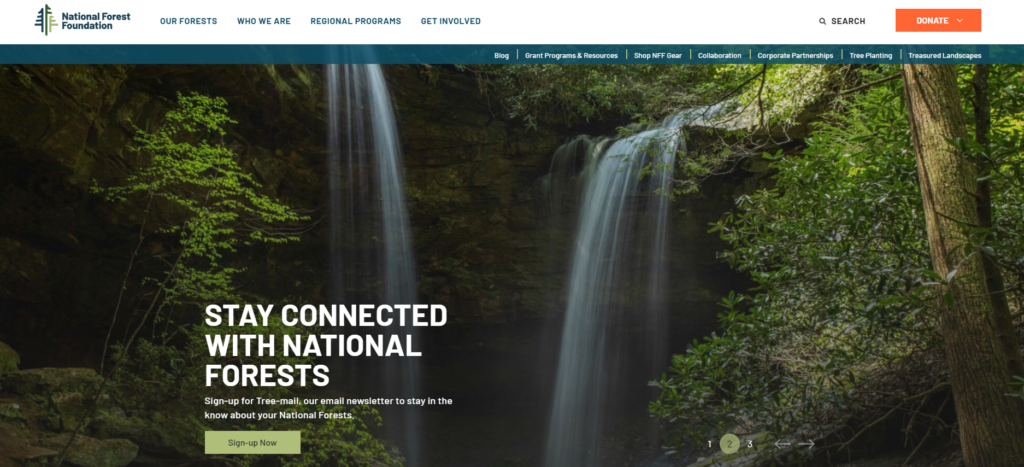
The Arbor Day Foundation, with its noble mission to inspire individuals to plant, nurture, and celebrate trees, has a rich legacy intertwined with the environment. Established in the wake of the inaugural Arbor Day in 1872, the foundation has since sown seeds of change, leading to the planting of over 500 million trees across an impressive expanse of more than 50 countries.
The efficacy of the Arbor Day Foundation is not a solo endeavor. They’ve cultivated a vast network of collaborations, allying with individuals, corporate entities, other nonprofit organizations, and foundations. This has enabled them to ensure that their conservation efforts are both concentrated and expansive. Their diverse initiatives span from rejuvenating forests, urban spaces, and rainforests to addressing soil contamination. Moreover, they’re deeply committed to educational outreach, ensuring communities are informed and empowered. Not to be overlooked, they also offer scenic retreats like the Lied Lodge & Arbor Day Farm, allowing nature enthusiasts to connect more deeply with the environment.
The Arbor Day Foundation has ushered in a suite of programs that resonate with their core values, emphasizing community recovery, energy conservation, urban tree initiatives, and more. Their global vision invites support, and through online donations, one can be a part of this green revolution, assisting in myriad projects that span the globe.
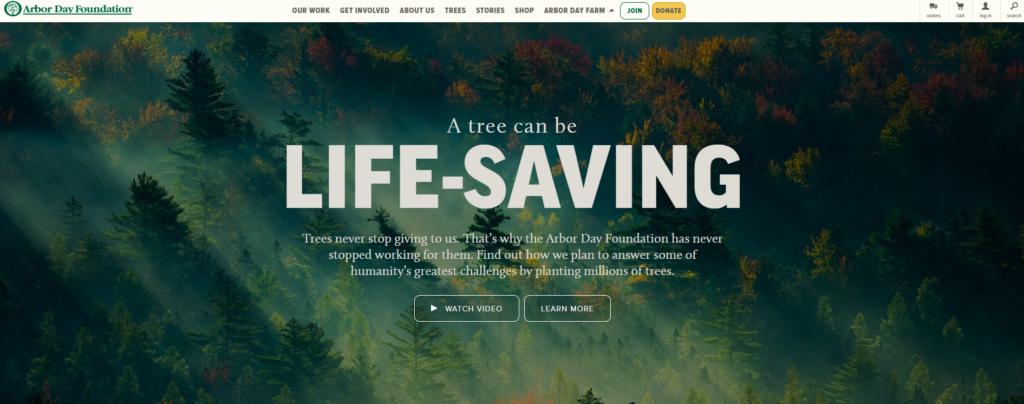
The Greening of Detroit is a dedicated non-profit organization with the core objective of improving the living standards for residents of Detroit. Their primary strategies include tree planting, job training, and youth involvement in environmental education. Their mission revolves around fostering a sustainable growth trajectory for a healthier urban Detroit community. This involves promoting trees, creating green spaces, offering educational opportunities, and job placements.
The organization’s tangible impact is evident in its achievements. Since its inception in 1989, they have planted over 146,000 trees in Detroit and its neighboring areas, including Hamtramck and Highland Park. The trees have been strategically placed along city roads, residential areas, parks, and playgrounds.
Furthermore, the Greening of Detroit has been a beacon for workforce development. Starting in 2010, they initiated landscape and tree artisan certification courses for local residents facing employment challenges. These training programs are comprehensive, including practical field training and essential skills like financial literacy, CPR, and MiOSHA awareness.
The organization also prides itself on its long-standing youth initiative, the Green Corps leadership program, which has been shaping young leaders for over 25 years. In essence, the Greening of Detroit embodies the vision of a greener and brighter future for Detroit.
The Fruit Tree Planting Foundation is dedicated to fostering a greener, cleaner, and healthier planet through the planting of fruit trees. Their ambitious mission aims to facilitate the planting of approximately 18 billion fruit trees globally, which equates to roughly three trees for every individual. By promoting organic standards, the foundation consistently plants over 60 orchards annually and distributes tens of thousands of fruit trees, accompanied by training and education, to communities worldwide.
Among their notable achievements, the foundation has collaborated with the Hopi Tribe in Arizona to rejuvenate a traditional orchard-keeping culture. They’ve provided thousands of trees to the Havasupai Tribe at the Grand Canyon’s base, ensuring nearly every household there can boast fruit trees in their yards. Additionally, they’ve undertaken large-scale projects, such as planting 65,000 trees annually in Ugandan villages at the invitation of the national government and introducing income-generating programs in El Salvador that wholly rely on their tree initiative. In the U.S., they’ve established nutritious orchards to aid food pantries serving the homeless, and in California, they’ve designed a model orchard at the state capitol to inspire and showcase sustainability.
The New York Restoration Project (NYRP) is a pioneering environmental organization established by Bette Midler in 1995. With a clear mission to ensure equitable access to green spaces for all New Yorkers, NYRP has devoted over a quarter-century to revitalizing parks and gardens across the city’s five boroughs. Their impact began with cleaning efforts in Fort Tryon and Fort Washington Parks and has since expanded. Today, NYRP oversees 52 community gardens and parks.
In 2015, NYRP’s MillionTreesNYC initiative reached a significant milestone by planting its millionth tree in South Bronx. Shifting its focus in 2011, NYRP launched the Gardens for the City program, successfully aiding in the creation of 250 gardens and communal green spaces. Additionally, their Living Shoreline initiative stands out as a robust response to climate change, focusing on Sherman Creek Park, one of Manhattan’s last native wetlands.
To contribute, individuals can sponsor a tree, join a community garden, or donate directly to bolster NYRP’s ongoing efforts.
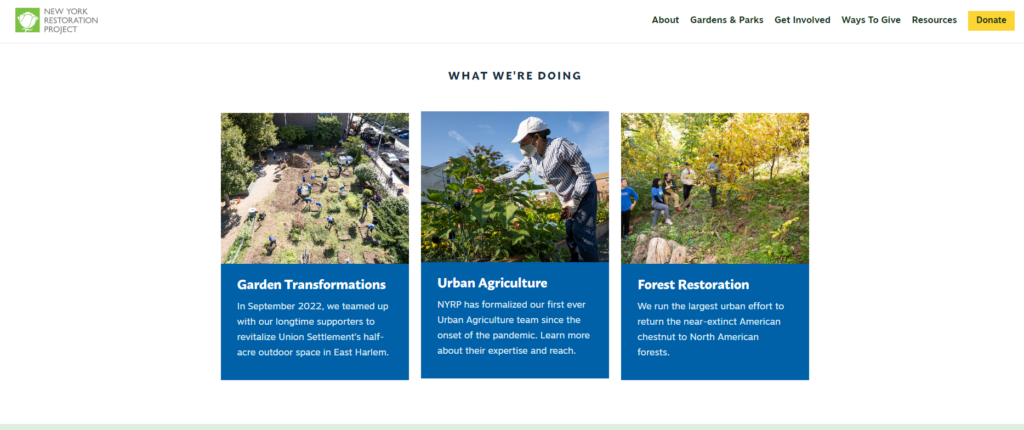
Trees Louisville stands as a testament to proactive urban forestation, committed to achieving and maintaining a community tree canopy coverage of 45%. Established by an Executive Order from Mayor Fisher in 2012, the organization was founded as a reaction to the challenges posed by rampant development, adverse weather, and the detrimental impact of the Emerald Ash Borer, a pest responsible for decimating Ash tree populations nationwide.
The nonprofit’s reach and efficacy are boosted by its collaboration with an array of partners, including Jefferson County Public Schools, the Urban Tree Canopy Assessment, Arbor Day Foundation, Archdiocese of Louisville, and Google Fiber. Central to Trees Louisville’s mission is fostering civic engagement. By emphasizing education and raising public awareness, they hope to expand the region’s tree canopy, further benefiting the environment and community.
For those keen to contribute, Trees Louisville offers multiple avenues. Donations can be made directly online or via support mechanisms like Amazon Smile. Moreover, a collaboration with the Kroger Community Rewards Program ensures a portion of every purchase aids the initiative, facilitating the planting of more trees throughout the city. Their commitment to transparency and engagement is further evidenced by their accessible donation page and options for recurring support.

Ben & Annie’s Trees for Tomorrow stands as a testament to the foresight and commitment of individuals dedicated to environmental rejuvenation. With a clear mission to cultivate trees in Central Texas, the organization aims not only to replenish the natural green cover but also to foster community ties and advance sustainable urban development. This endeavor promotes cleaner air and helps transform urban spaces into vibrant, green havens for residents.
Named in honor of founder Bryan Mendenhall’s children, Ben & Annie’s Trees is driven by the urgent need to rectify the adverse effects of urbanization. Recognizing the gap left by builders and home developers, the organization passionately embarks on initiatives to replant trees and establish new parks and green corridors. Beyond mere plantation, they aim to enlighten the community about sustainable growth, environmental conservation, and the myriad benefits of green spaces. Their advocacy also extends to encouraging builders to adopt a more conscientious approach, urging them to replace the trees they uproot.
Spread across key Texan locations, including San Antonio, New Braunfels, Boerne, and Bulverde, Ben & Annie’s Trees has established a robust presence. Supporters looking to contribute to this noble cause can opt for one-time or recurrent online donations. The organization’s impact is further magnified by collaborations with entities like Weston Dean Custom Homes, which generously matches 50% of the donations, amplifying every supporter’s contribution.
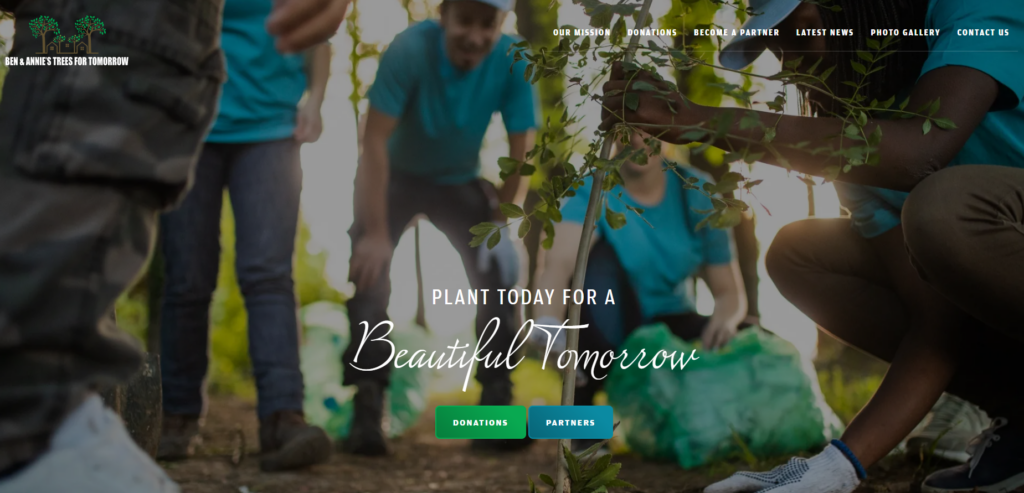
Every reforestation project, whether big or small, contributes significantly to the global environmental canvas. Trees are the planet’s lungs, absorbing carbon dioxide and releasing life-sustaining oxygen. They also provide habitats for countless species, stabilize ecosystems, and help mitigate the impact of climate change. In the face of global environmental challenges, the importance of restoring and maintaining our forests cannot be understated. Each tree planted, each collaboration formed, and every technological innovation in reforestation offers hope. It’s a testament to humanity’s collective will to heal the Earth and ensure a sustainable future for generations to come.
Your support can make a difference. Whether you’re planting a tree in your backyard, supporting a local reforestation initiative, or spreading awareness about the importance of forests, every action counts. Join the global movement. Advocate for policies that prioritize green initiatives. Donate to organizations spearheading reforestation efforts or volunteer your time and energy. Remember, the health of our planet and the well-being of future generations is in our hands. Together, let’s make the world a greener, more resilient place.
Stay a while and read more posts like this
Let’s devote a few minutes to envision our world in 2100. It’s quite a thought experiment, given the dramatic transformations our planet has experienced in...
With climate change looming large, the world is embarking on a quest for solutions to heal our ailing planet. Solar geoengineering emerges as a burgeoning field,...
Taking on parenthood comes with unique choices that factor in more than just our family’s immediate needs. For modern parents, who are not just guardians of...